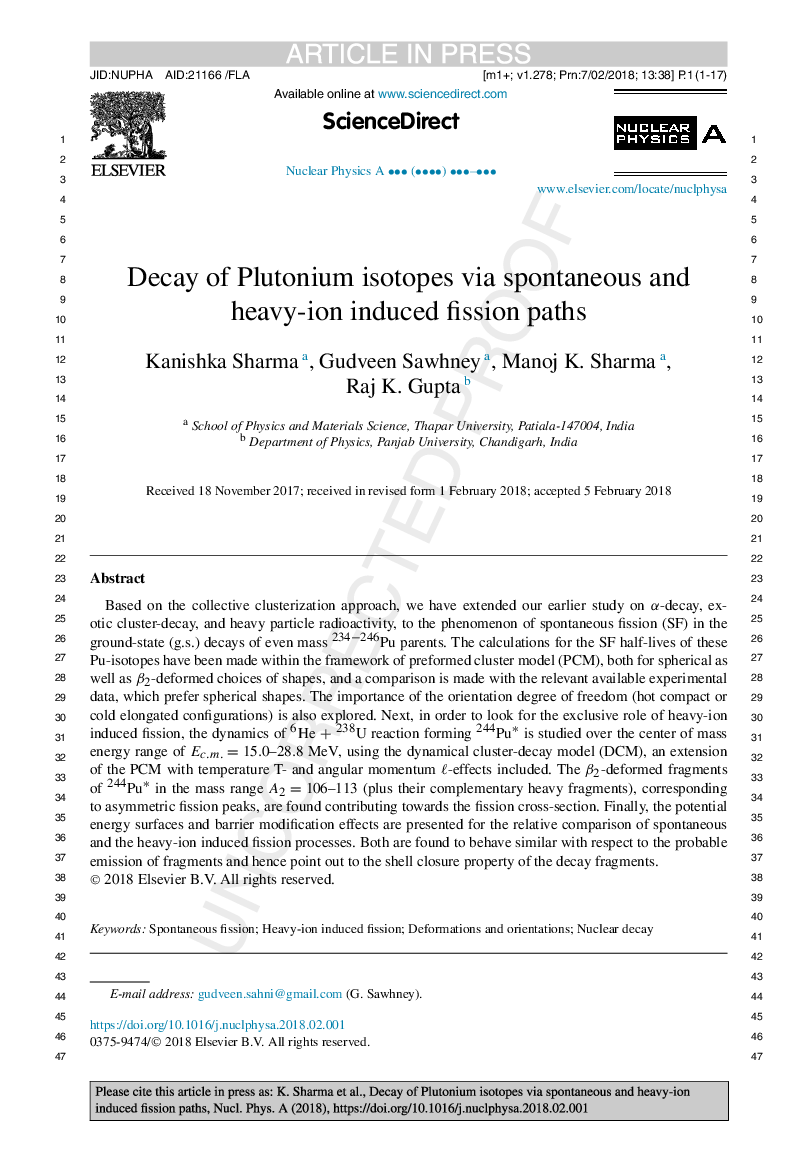| Article ID | Journal | Published Year | Pages | File Type |
|---|---|---|---|---|
| 8182715 | Nuclear Physics A | 2018 | 17 Pages |
Abstract
Based on the collective clusterization approach, we have extended our earlier study on α-decay, exotic cluster-decay, and heavy particle radioactivity, to the phenomenon of spontaneous fission (SF) in the ground-state (g.s.) decays of even mass 234â246Pu parents. The calculations for the SF half-lives of these Pu-isotopes have been made within the framework of preformed cluster model (PCM), both for spherical as well as β2-deformed choices of shapes, and a comparison is made with the relevant available experimental data, which prefer spherical shapes. The importance of the orientation degree of freedom (hot compact or cold elongated configurations) is also explored. Next, in order to look for the exclusive role of heavy-ion induced fission, the dynamics of 6He + 238U reaction forming 244Puâ is studied over the center of mass energy range of Ec.m.=15.0-28.8MeV, using the dynamical cluster-decay model (DCM), an extension of the PCM with temperature T- and angular momentum â-effects included. The β2-deformed fragments of 244Puâ in the mass range A2=106-113 (plus their complementary heavy fragments), corresponding to asymmetric fission peaks, are found contributing towards the fission cross-section. Finally, the potential energy surfaces and barrier modification effects are presented for the relative comparison of spontaneous and the heavy-ion induced fission processes. Both are found to behave similar with respect to the probable emission of fragments and hence point out to the shell closure property of the decay fragments.
Keywords
Related Topics
Physical Sciences and Engineering
Physics and Astronomy
Nuclear and High Energy Physics
Authors
Kanishka Sharma, Gudveen Sawhney, Manoj K. Sharma, Raj K. Gupta,
